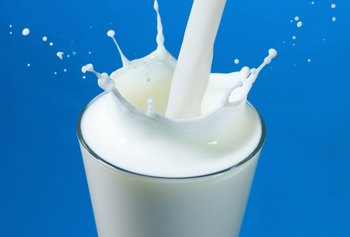Feb 27: Chemotherapy may help in treating cancer, but it comes with its set of consequences. Some of the most common side effects of chemotherapy include loss of hair, weakness, nausea, pain, cognitive impairment among others. A recent study done by University of Iowa in the US found that milk can help in tackling the after effects of chemotherapy, particularly nerve pain. This is because milk contains a vitamin which proves to be useful in treating or preventing the pain. Chemotherapy basically refers to the usage of drugs to treat diseases, but we often relate it to the treatment of cancer. Different kinds of chemotherapy are used for treating cancer, depending on the severity of the disease. This also means that different kinds of drugs are given to the body.
 While chemo may be necessary for the treatment of cancer, its side effects are something you can't really avoid. So finding some remedies to bring the patient some relief is a welcome change. For the aforementioned study, the researchers tested the effect of nicotinamide riboside (NR), a form of vitamin B3, in female rats that were treated with paclitaxel, a chemotherapy commonly used to treat breast and ovarian cancer.
While chemo may be necessary for the treatment of cancer, its side effects are something you can't really avoid. So finding some remedies to bring the patient some relief is a welcome change. For the aforementioned study, the researchers tested the effect of nicotinamide riboside (NR), a form of vitamin B3, in female rats that were treated with paclitaxel, a chemotherapy commonly used to treat breast and ovarian cancer.
Although chemotherapies have improved cancer survival rates, many of these drugs also cause debilitating side effects that decrease the quality of life of patients and survivors. In particular, many anti-cancer drugs cause chemotherapy-induced peripheral neuropathy (CIPN) - nerve damage and pain.
"Chemotherapy-induced peripheral neuropathy can both hinder continuation of treatment and persist long after treatment has ended, severely affecting the quality of life of cancer patients," said study first author Marta Hamity.
Nicotinamide riboside boosts levels of an important cell metabolite called nicotinamide adenine dinucleotide (NAD+). Previous animal studies have shown that increasing NAD+ levels with NR can protect against many types of nerve damage.
"Our findings support the idea that NR could potentially be used to prevent or mitigate CIPN in cancer patients, resulting in a meaningful improvement in their quality of life and the ability to sustain better and longer treatment," said Hamity.
The findings, published in the journal Pain, lay the groundwork for testing whether this nutritional supplement can reduce nerve pain in cancer patients receiving chemotherapy.





Comments
Add new comment